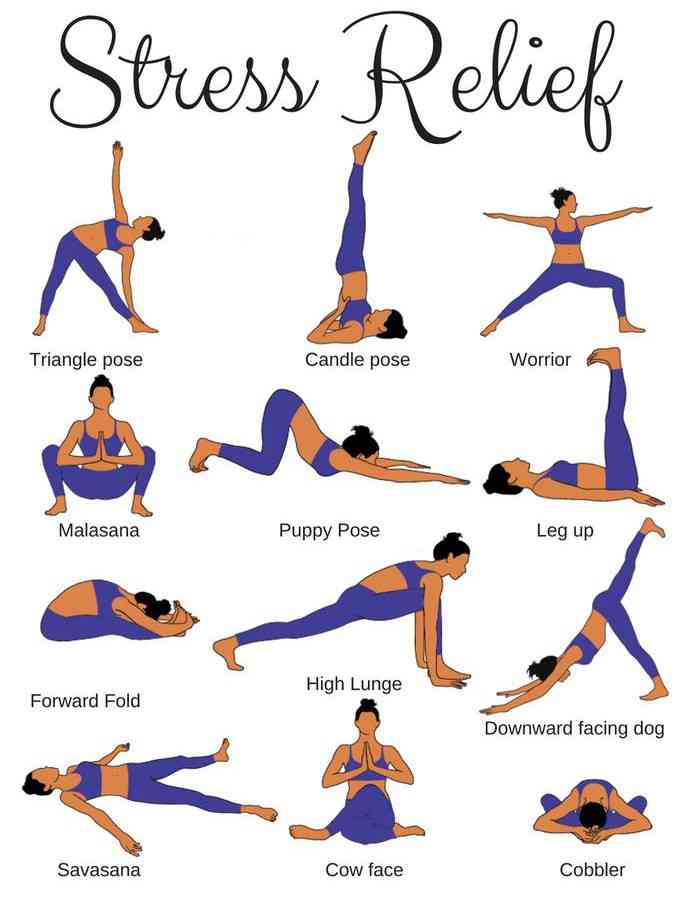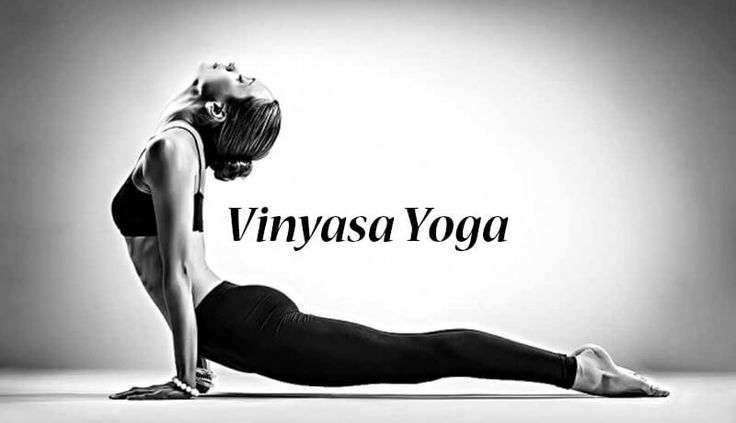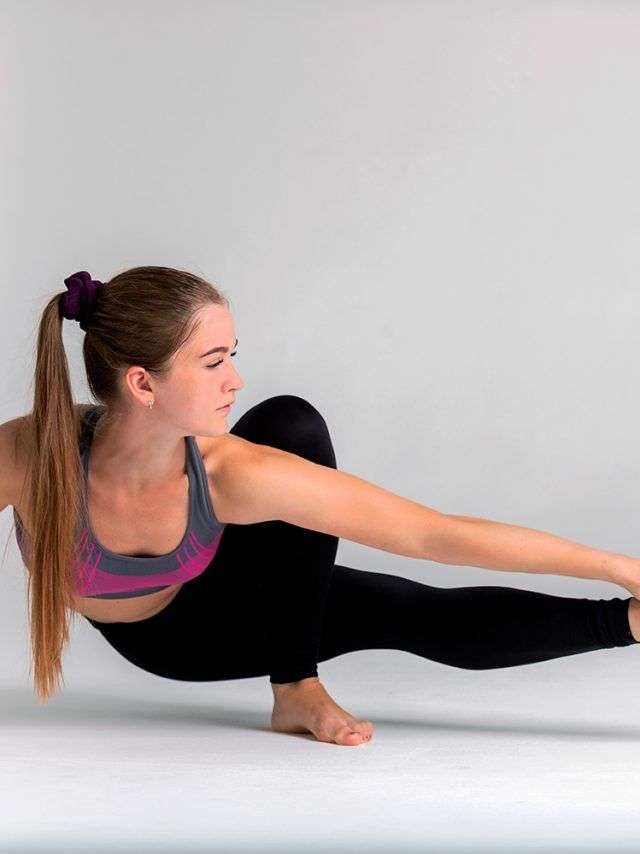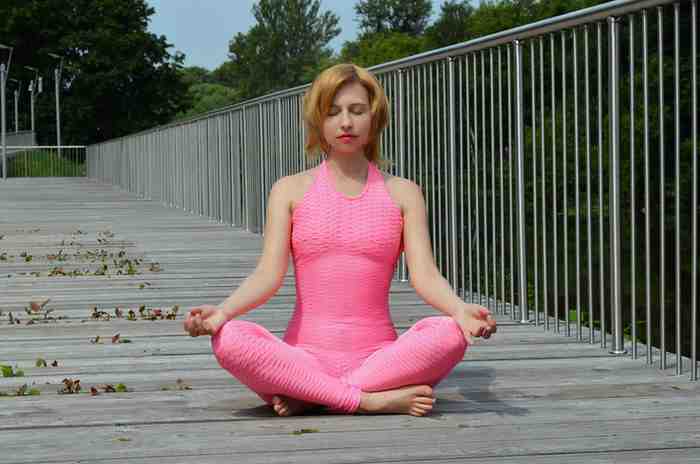Yoga For Stress Relief
Stress has become an integral part of modern life, affecting our physical and mental well-being. From the pressures of work to the chaos of daily responsibilities, we all experience stress in various forms. However, there’s an ancient practice that offers solace and serenity in the midst of life’s turbulence: yoga. In this article, we’ll explore the transformative power of yoga for stress relief and relaxation.
Finding Calm Amidst the Chaos
In our fast-paced world, where stress is a constant companion, yoga provides a sanctuary of peace and tranquility. With a history spanning thousands of years, yoga offers a holistic approach to reducing stress, calming the mind, and rejuvenating the body.

The Origins of Yoga
Let’s begin by delving into the origins of yoga. Originating in ancient India, yoga is more than just a physical practice. It is a comprehensive system that encompasses physical postures, mindful breathing, meditation, and ethical principles.
Understanding Stress
To combat stress effectively, we first need to understand it. Stress is the body’s natural response to challenging situations, often referred to as the “fight or flight” response. While this response can be beneficial in the short term, chronic stress can lead to various health issues.
Yoga: A Path to Stress Relief
Mindful Breathing Techniques
One of the foundational aspects of yoga is pranayama, or breath control. This practice involves conscious, controlled breathing techniques that calm the nervous system and reduce stress. Deep, mindful breaths activate the body’s relaxation response, alleviating stress.
Physical Release Through Asanas
Yoga involves a series of physical postures, known as asanas. These postures are designed to stretch and strengthen the body. As you move through these asanas, tension and stress held in the muscles and joints are released. This physical release is often accompanied by a sense of relaxation.
Calming the Mind: Meditation
Meditation is an integral part of yoga, promoting mental calm and emotional balance. Regular meditation helps reduce racing thoughts and promotes mental tranquility. We’ll explore the various meditation techniques that can aid in stress reduction.
Hormone Regulation
The practice of yoga has been shown to regulate stress hormones like cortisol, reducing their levels in the body. This hormone regulation leads to a decrease in the physiological response to stress, promoting overall well-being.
The Mind-Body Connection
Yoga emphasizes the connection between the mind and body. This awareness allows individuals to identify the physical sensations associated with stress and learn to manage them effectively.
Choosing the Right Yoga Practice
Yoga comes in various styles, each offering unique approaches to stress relief and relaxation. It’s essential to choose a style that suits your needs and preferences. We’ll explore different yoga styles and their suitability for stress reduction.
Restorative Yoga
Restorative yoga is a gentle, slow-paced practice that involves long-held poses. It is particularly well-suited for those seeking deep relaxation and stress relief.
Vinyasa Yoga

Vinyasa yoga, characterized by its fluid, dynamic movements, offers both a physical workout and stress reduction. We’ll explore how the flow of movements can help release tension.
Yin Yoga

Yin yoga focuses on deep stretches and longer holds, targeting the body’s connective tissues. It offers a meditative and calming approach to stress relief.
Incorporating Yoga into Your Routine
To experience the full benefits of yoga for stress relief and relaxation, it’s essential to incorporate it into your daily or weekly routine. This section provides practical tips for getting started with yoga.
Consistency is Key
Establishing a regular yoga practice, even if it’s just a few minutes each day, is essential for reaping its full benefits.
Joining a Yoga Class
For beginners, joining a yoga class or participating in online sessions can provide guidance and structure. We’ll discuss the advantages of learning from experienced instructors.
Create a Relaxing Space
Designating a dedicated space in your home for yoga practice can enhance the relaxation experience. We’ll explore how to set up a calming environment.
Listen to Your Body
Paying attention to your body’s signals during yoga is crucial. We’ll provide insights into how to practice safely and prevent injury.
Combining Techniques
Yoga can be even more effective when combined with other stress-management techniques, such as meditation, mindfulness, and deep breathing exercises. We’ll discuss how to integrate these practices.
Conclusion: Embrace the Power of Yoga
In conclusion, yoga is a powerful and transformative tool for managing stress and finding relaxation in the midst of life’s challenges. Whether you’re a beginner or an experienced practitioner, the benefits of yoga are accessible to all. By consistently practicing yoga and embracing its principles, you can embark on a journey towards inner peace and stress relief.
FAQs
1. How often should I practice yoga for stress relief?
The frequency of your yoga practice depends on your schedule and needs. Even practicing for a few minutes daily can be beneficial, but ideally, aim for at least 2-3 sessions per week.
2. Can I practice yoga if I’m not flexible?
Absolutely! Yoga is suitable for people of all flexibility levels. Many poses can be modified to accommodate your flexibility, and with regular practice, you’ll gradually become more flexible.
3. Are there specific yoga poses for stress relief?
Yes, several yoga poses are particularly effective for stress relief, such as Child’s Pose, Cat-Cow Pose, and Savasana. These poses help release tension and promote relaxation.
4. Can yoga replace other stress-relief techniques like meditation?
While yoga includes meditation, it can complement other stress-relief techniques rather than replace them. Combining yoga with practices like meditation and deep breathing can be highly effective.
5. How long does it take to experience the stress-relief benefits of yoga?
The time it takes to experience the benefits varies from person to person. Some individuals may feel immediate stress relief after a session, while for others, it may take a few weeks of consistent practice.
6. What should I wear for a yoga session?
Wear comfortable, breathable clothing that allows you to move freely. Many people prefer yoga-specific attire, but any clothing that meets these criteria will suffice.

